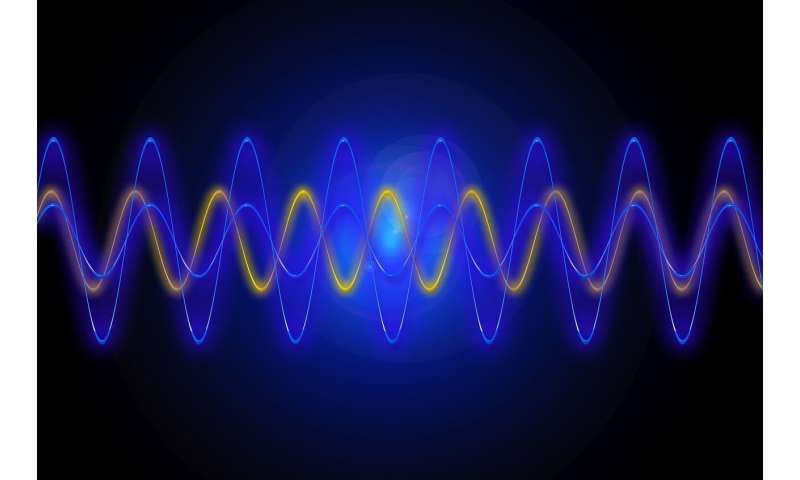
In research published in Science Advances, a group led by scientists from the RIKEN Center for Emergent Matter Science (CEMS) have used the principle of magneto-rotation coupling to suppress the transmission of sound waves on the surface of a film in one direction while allowing them to travel in the other. This could lead to the development of acoustic rectifiers—devices that allow waves to propagate preferentially in one direction, with potential applications in communications technology.
Devices known as rectifiers are extremely important in technology development. The best known are electronic diodes, which are used to convert AC into DC electricity, essentially making electrification possible.
In the current study, the group examined the movement of acoustic surface waves—movements of sound like the propagation of earthquakes over the surface of the Earth—in a magnetic film. There is interplay between the surface acoustic waves and spin waves, disturbances in magnetic fields within the material that can move through the material.
Acoustic surface waves can excite spin waves in two ways. One, magneto-elastic coupling, is very well documented. However, a second, magneto-rotation coupling, was proposed more than 40 years ago by Sadamichi Maekawa, one of the authors of the current study, but was not experimentally verified until now.
In the current study, the authors found that the two mechanisms occur at the same time, but under different intensities. They found that when the magnetization of the magnetic specimen is rotating in the same direction of the surface acoustic waves, the energy of the acoustic surface waves is more efficiently transferred to the spin waves, increasing the rotation of the magnetization. In fact, the researchers were able to identify a configuration of unidirectional coupling where only the energy of surface acoustic waves in one direction could be transferred to the rotation of the magnetization. They also noticed that this rectification effect was more pronounced when the magnetic material exhibited magnetic anisotropy, meaning there was a preferred direction of internal magnetization even before the application of an external magnetic field.
Mingran Xu of RIKEN CEMS, the first author of the paper, says: "It was very exciting to show that the phenomenon of magneto-rotation coupling actually takes place, and that it can be used to completely suppress the movement of acoustic energy in one direction."
Jorge Puebla, also of RIKEN CEMS, says: "We hope that we can use this work to create an 'acoustic diode' equivalent to the electronic diodes that are so important. We could relatively easily make a device where the acoustic energy is efficiently transferred in one direction but blocked in the other. This is happening at microwave frequencies, which is the range of interest for 5G communication technology, so surface acoustic waves may be an interesting candidate for this technology."
Citation: Scientists develop principles for the creation of an 'acoustic diode' (2020, August 7) retrieved 7 August 2020 from https://ift.tt/2PuZXMO
This document is subject to copyright. Apart from any fair dealing for the purpose of private study or research, no part may be reproduced without the written permission. The content is provided for information purposes only.
"creation" - Google News
August 08, 2020 at 01:00AM
https://ift.tt/2PuZXMO
Scientists develop principles for the creation of an 'acoustic diode' - Phys.org
"creation" - Google News
https://ift.tt/39MUE4f
https://ift.tt/3bZVhYX
Bagikan Berita Ini














0 Response to "Scientists develop principles for the creation of an 'acoustic diode' - Phys.org"
Post a Comment